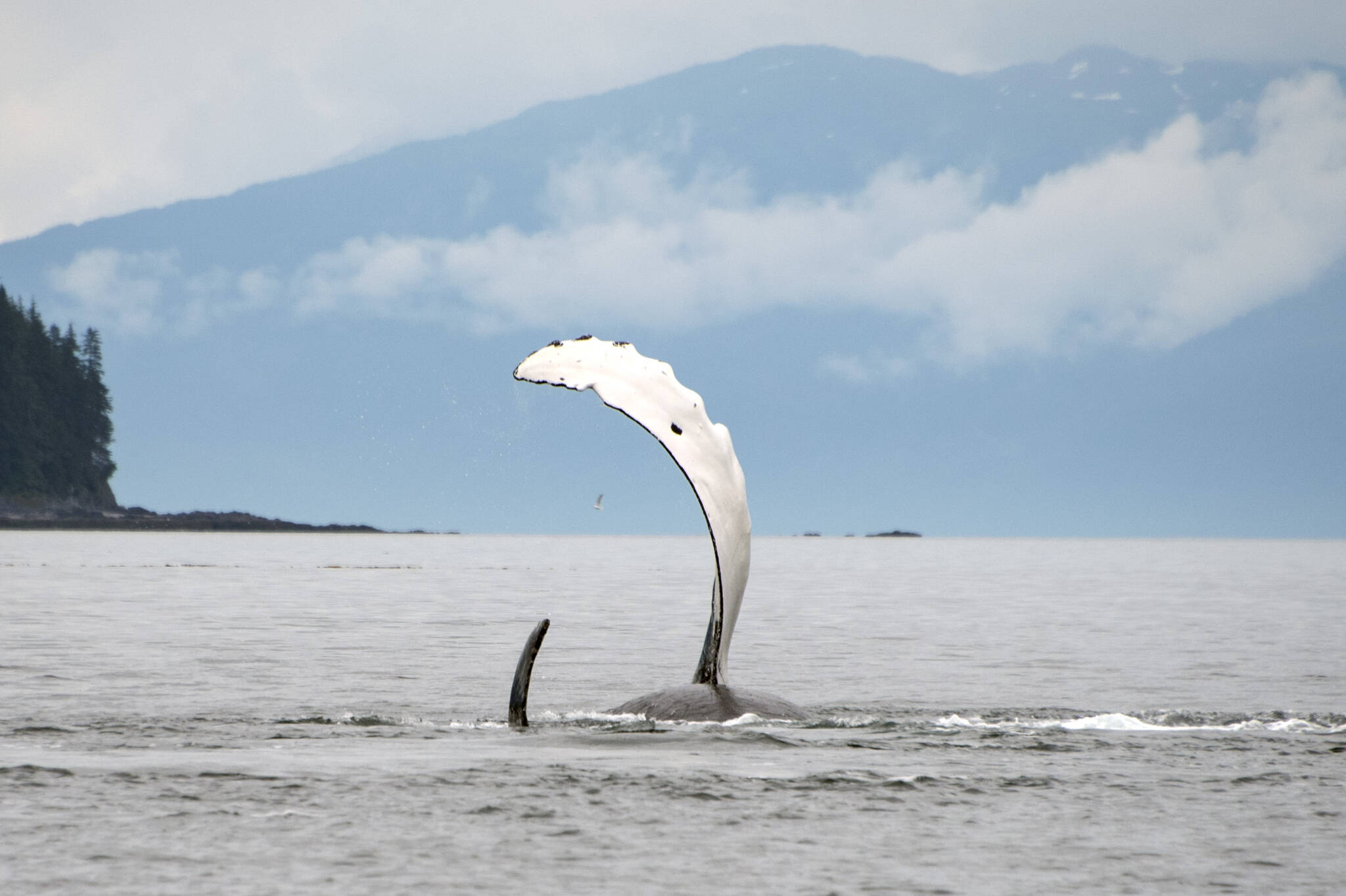By Rochelle Baker, Local Journalism Initiative Reporter CANADA’S NATIONAL OBSERVER
Autumn is the season of whale song on the Pacific Northwest Coast, says longtime researcher Janie Wray.
Male humpbacks off the B.C. coast are beginning to get vocal — practising and modifying a supernatural and intricate song that is transmitted and almost simultaneously adopted among themselves before and during their winter migration to warmer climes.
“It’s phenomenal. The males are just starting to sing these long, beautiful songs that we’re quite certain are connected to breeding on some level,” said Wray, CEO of the North Coast Cetacean Society (BC Whales).
“I feel blessed to be able to listen to them. The humpback whale song has been changing, evolving for thousands of years. And yet, all of the males in the Pacific population are picking up those changes.”
It’s especially exciting because people everywhere will be able to tune into this humpback opera season, and orca and fin whale sounds as well, as a new collective network of hydrophones spanning the B.C. coast goes live this week, she said.
A coalition of First Nations and whale conservation groups have established Whale Sound — a collaborative website that allows researchers and the public to listen and learn more about whale acoustics and how that data might better protect marine mammals moving forward.
Data and marine sounds derived from 16 different hydrophones off southern and northern Vancouver Island as well as the central and northern coast of British Columbia will be pooled on the central platform and assembled into a massive acoustic library, Wray said.
“That data is then accessible for researchers or territorial stewards, government or whoever is interested in doing a research project on whale acoustics or the impact of noise on whale habitat,” she said.
Cetaceans — whales, dolphins and porpoises — primarily depend on sound to navigate or “see” in the ocean depths when searching for food, communicating with family or community members, fleeing predators and finding mates, Wray said.
But high levels of human-caused noise pollution from underwater construction, pile driving, dredging sonar and vessel traffic can cause acoustic blindness for whales that rely on sound for survival.
Shipping or boat traffic is one of the greatest threats to whales along the B.C. coast, Wray noted.
Serious injury and whale fatalities from ship strikes are a growing threat that tends to be concentrated in specific areas, but whales can’t easily escape noise pollution, which travels great distances at rapid speeds, Wray said.
Noise from a ship’s propeller can reach an explosive 170 decibels — the equivalent of a jet engine or a rocket launch — and travel five times faster in water than it does in air and disrupt marine life within a 100-kilometre radius.
The Whale Sound project is unique because it breaks down silos of highly localized whale research, centralizing the data so researchers can draw wider conclusions about how noise pollution impacts marine mammal behaviour and survival, she said.
“That’s the beauty of the project,” Wray said, noting some of the hydrophone setups are situated in very noisy, or alternatively, very quiet areas on the coast.
“Researchers are able to take acoustic information that differs environmentally and compare different regions.
“So, you are getting a much broader picture of what’s really happening along this coast.”
The data collected will help determine a baseline for underwater noise at various points and regions, she noted.
That information will hopefully be used to create marine protected areas to protect whales from excessive sound or ship strikes, as well as shipping routes and slow-down zones to lessen the risks vessels pose.
An emerging hot spot of concern from noise and ship strikes is the approach and entrance to Douglas Channel near Kitimat, B.C., where shipping traffic is expected to skyrocket when the LNG Canada project is operational in 2025.
The narrow, intricate waterways in Gitga’at First Nation territory host a globally unique population of threatened fin whales, seasonally concentrated populations of humpbacks, and orcas, including the threatened northern resident killer whale population.
“It’s actually unusual to get humpbacks, orcas and fin whales all concentrated in one location. It’s very special,” said Wray.
Acoustic data from the nearby whale research station on Fin Island, working in collaboration with the Gitga’at, is included in the Whale Sound project.
“Right now, that area is very quiet and, of course, that’s about to change,” she said.
As well as information and examples of different whale acoustics, an interactive map showing the location of the hydrophone stations on the coast will provide data dashboards with information about the type, time and frequency of whale acoustics documented at each site. Some locations, like those from research partner Orca Lab, can already be listened to live.
The next phase of the project will allow people to tune in 24/7 at all the sites, Wray said.
The collaborative project, primarily funded by Fisheries and Oceans Canada (DFO) through the Canadian Nature Fund, involves BC Whales, the Gitga’at First Nation, the Pacific Orca Society (Orcalab), the Kitasoo/Xai’xais and the Heiltsuk First Nations, Saturna Island Marine Research and Education Society (SIMRES), and WWF-Canada.
There’s a shared commitment to focus on acoustics, a non-intrusive research method that shows respect for the well-being of whales, Wray said.
More research groups and First Nations are expected to join the network over time, further deepening the understanding of whale acoustics on the West Coast, Wray said.
Working collectively will better ensure the continued recovery of whales in B.C. waters and efforts to mitigate the smog of human noise so humpbacks and other whales can continue to communicate and thrive in coastal waters.
“They are singing to be heard,” Wray said.
“When you listen, you have an emotional reaction because it is truly beautiful. It makes you recognize these whales are emotional beings.”
READ ALSO: Quiet Salish Sea gives scientists chance to study endangered killer whales
READ ALSO: VIDEO: Captivating sounds of whales recorded off shore of B.C.

